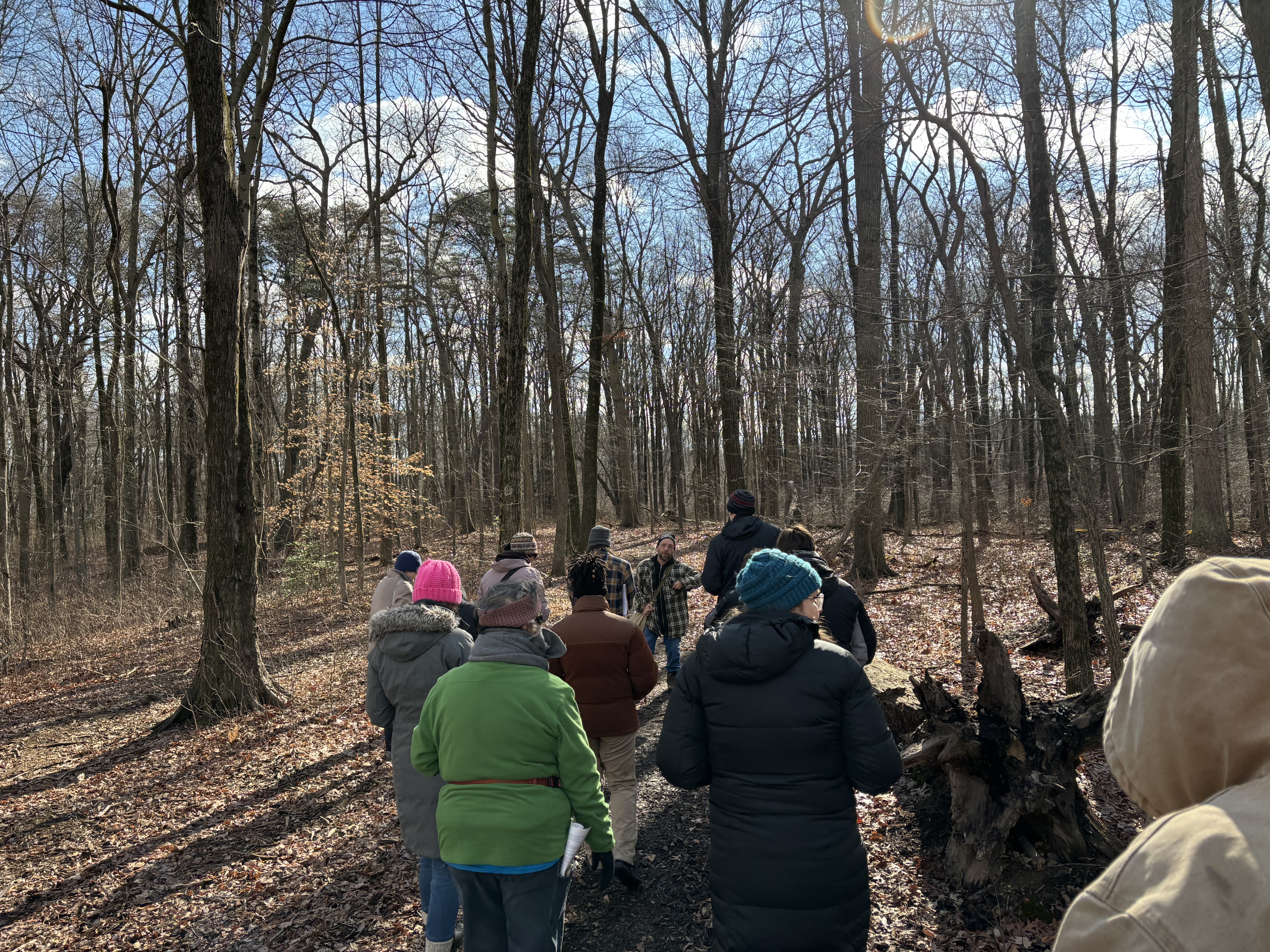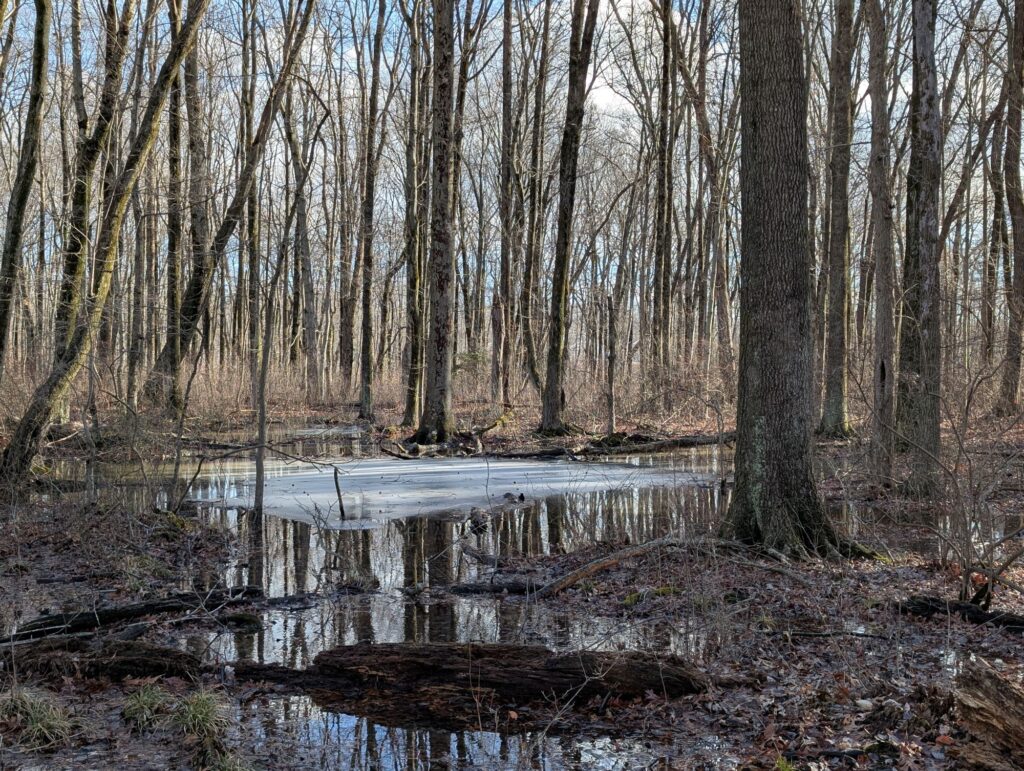by: Briana Golding, Intern
Thank you to the volunteers who joined NeighborSpace and Natural Resources Planner Francis Smith for our Volz Park Winter Tree Walk earlier this month!
Volunteers had the pleasure of touring Volz Park while learning interesting, insightful facts about the trees that call the park “home”. Natural Resources Planner Francis Smith guided volunteers through one of the park’s main trails and gave expert insight on forest management. Francis is a trusted partner of NeighborSpace, who has worked with the Department of Natural Resources and expanded his expertise over the years. During the tour, volunteers were taught how to identify certain tree species and the efforts that need to be taken to conserve them.



When it comes to forest management, Francis emphasizes the importance of invasive management. For healthy, abundant forests such as Volz, invasive plant species are a critical threat to the ecosystem. To fight against these pesky plants, he suggested getting to know your invasives and the native plants that can be re-introduced to repair the ecosystem. Luckily the diverse trees and shrubs at Volz Park help to maintain a healthy balance. Shrubs like the Spicebush play an important role in protecting the area from the spread of invasives and possible damage to young trees caused by deer.

The work doesn’t end with invasives! To keep forests like Volz healthy, environmentalists of all levels must help to maintain the environment. You may not perform stream or forest assessments like Francis, but you can remove litter and invasives. NeighborSpace is excited to work with Francis in the future to continue conserving Baltimore County’s forests!

Featured fun facts:
- Volz is home to various trees including: Black gum, Sweet gum, Red maple, Willow oak, and Beech trees (but you see primarily maple and gum trees!)
- Deer hate Spicebush, but that doesn’t mean you can’t love it! Try steeping the twigs in water to make tea, or try seasoning your meal with the berries next time you spot a Spicebush.
- Look out for Black gum (Nyssa Sylvanica). It can be recognized by its horizontal branching pattern and its distinct “crocodile” bark!
- Liquidamber Stryaciflua ( commonly known as “Sweet gum”) was given its name based on the liquid under the bark that Native Americans used for gum.
- Next time you run out of toilet paper in the forest, find a Swamp White Oak! Their leaves are surprisingly soft!

